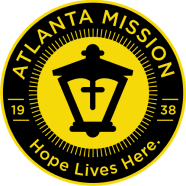News & Events
What Does Homelessness Look Like in 2022?

It’s a new year, but our goal is still the same. We are here to bring inspiration and hope to people experiencing homelessness in Atlanta. We know that, through Christ, we can change the lives of the men, women and children who come through the doors at any one of our four facilities.
The work we do remains the same as long as there is a need in this city. So what does homelessness look like in 2022? Well, the statistics are not great. We know that homelessness is a persistent problem across the world, but the totals in the United States are alarming.
Reports have shown that on any given night, there could be more than 580,000 people who don’t have a place to call home. We are now learning that these numbers don’t even show the complete picture of the need in our country either. The impact of the COVID-19 pandemic on homelessness hasn’t been accurately captured, and many of the current nationwide estimates of homelessness were released in 2020 prior to COVID-19 being declared a health emergency.
A report last October by UNC Charlotte’s Urban Institute and Mecklenburg County revealed that homelessness in the region skyrocketed by 55% over the last year, and this could be a trend seen in other large cities across the U.S. as we see the end of eviction moratoriums combined with the spike in rent costs. An estimated 7 million households are behind on rent—that’s about 15 percent of renter households nationwide.
Evictions in Georgia are starting to increase as the state lags behind in the disbursement of rental assistance, according to the Atlanta Journal-Constitution. An estimated 30,000 tenants in Georgia were waiting for applications to be processed as of late November 2021— as a federal moratorium kept evictions in check before it lapsed in August 2021.
How can we be prepared so that we can best address these new concerns?
One thing we know is that we have to get creative. We have to use what is at our disposal to make the greatest impact. Our Hope Giving Model helps us identify each person’s unique circumstance to provide customized services to help our clients overcome the cause of their homelessness.
We aim to meet the basic needs of shelter, food, a place to shower—our staff works to meet those needs and then triage and assess immediate needs before pointing to the next step. We are then able to offer each client a personalized service program based on their needs to help clients become rooted in community, retain employment and then become eligible for housing.
We do this because we know that growth is well within reach—homelessness is only a temporary circumstance.
So while we know that we have hard work ahead of us in 2022, we also know that, through Christ, transformation is possible.








